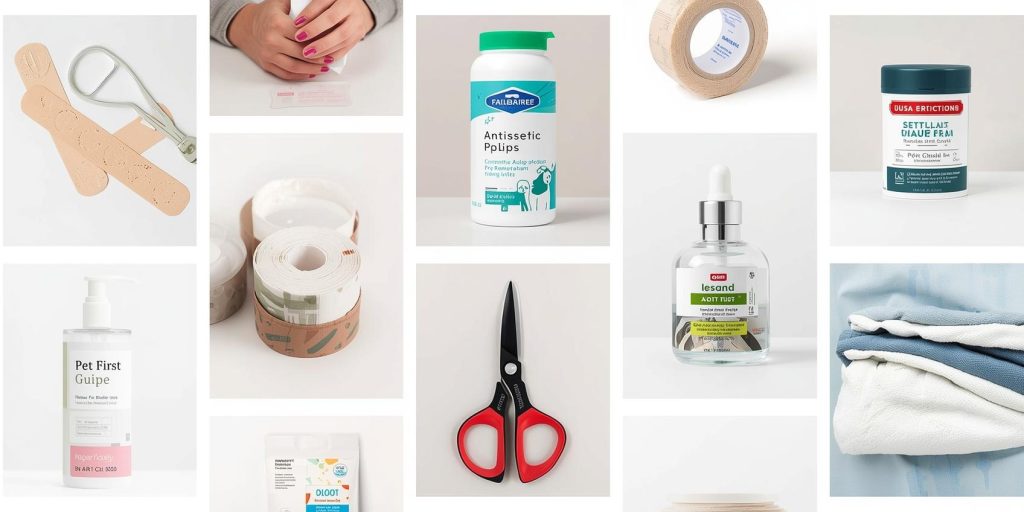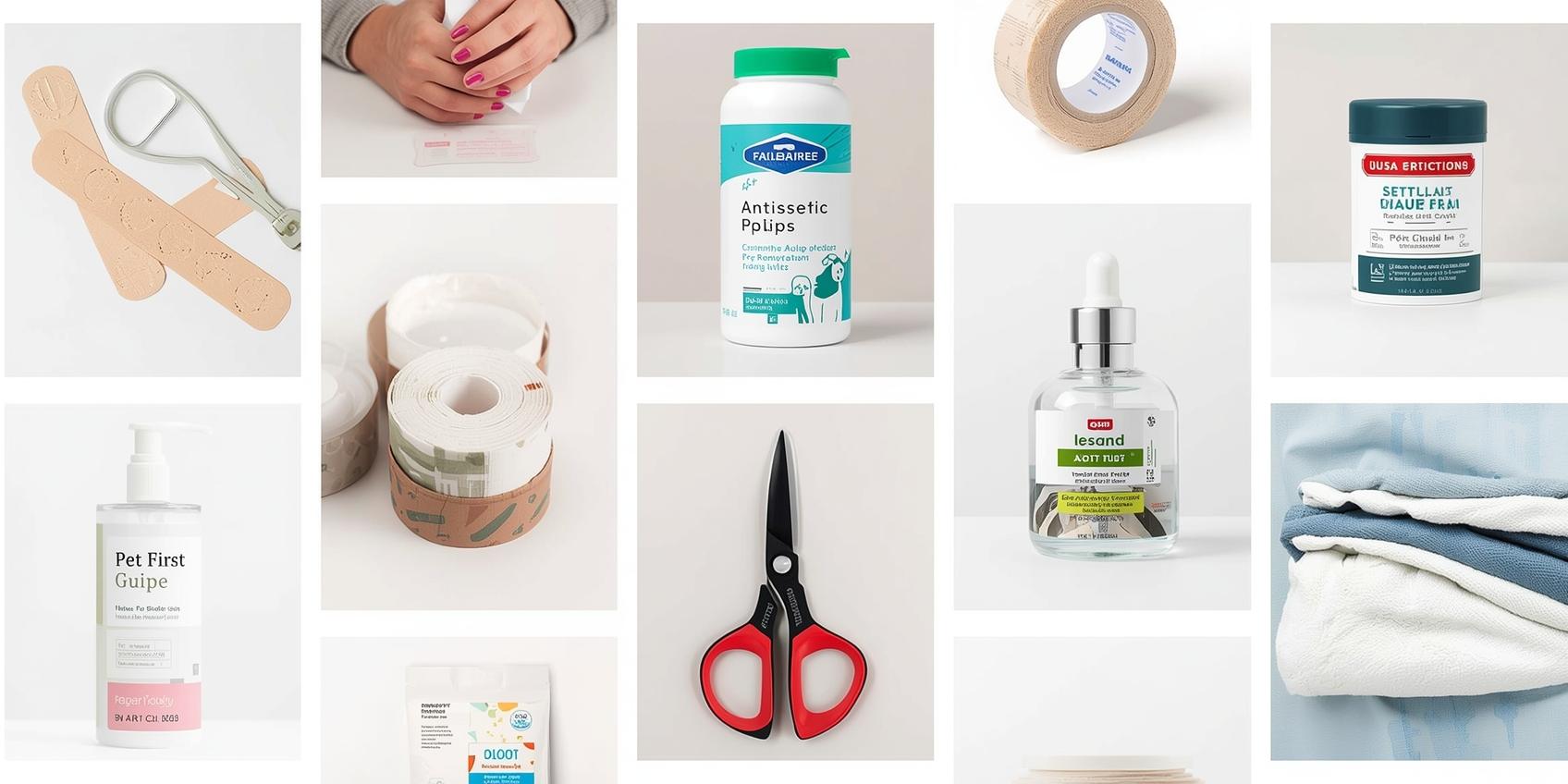Top Dog First Aid Products for Emergencies

Top Dog First Aid Products for Emergencies: Every Pet Parent’s Essential Guide
As loving pet parents, we strive to keep our furry companions safe, happy, and healthy. However, accidents happen, and just like humans, dogs can experience unexpected injuries or sudden illnesses. In such critical moments, having the right Dog First Aid supplies readily available can make all the difference, potentially saving your dog’s life or preventing further complications. This comprehensive guide will walk you through the essential Dog First Aid products you need to assemble a robust emergency kit for your beloved canine.
Why is a Dedicated Dog First Aid Kit Crucial?
Many human first aid supplies are unsuitable or even harmful for dogs. For instance, some human pain relievers are toxic to canines. A specialized Dog First Aid kit ensures you have the correct, dog-safe items at your fingertips. It provides peace of mind, knowing you’re prepared for common emergencies like cuts, sprains, allergic reactions, or even just a nasty thorn. Being able to administer immediate Dog First Aid can stabilize your pet until you can reach a veterinarian, which is especially vital if you live far from an emergency clinic or if an incident occurs during off-hours.
Essential Categories of Dog First Aid Products
To effectively manage a range of emergencies, your Dog First Aid kit should be organized into several key categories:
1. Wound Care and Bandaging: This is perhaps the most critical section. Dogs are prone to cuts, scrapes, and paw pad injuries.
- Antiseptic Wipes/Solution (e.g., Chlorhexidine or Povidone-Iodine): These are vital for cleaning wounds to prevent infection. Always opt for veterinarian-approved options safe for pets.
- Sterile Saline Solution: Perfect for flushing out debris from wounds or eyes without causing irritation.
- Non-Stick Gauze Pads: To cover and protect wounds.
- Absorbent Gauze Rolls: For larger wounds or to provide cushioning.
- Self-Adhesive Vet Wrap (Cohesive Bandage): This is a game-changer for Dog First Aid. It sticks to itself, not your dog’s fur, making bandaging much easier and more secure. Ensure it’s not wrapped too tightly to avoid cutting off circulation.
- Adhesive Tape (Medical Grade): For securing bandages where vet wrap might not be ideal.
- Blunt-Tipped Scissors: Essential for safely cutting bandages, tape, or fur away from a wound.
- Triple Antibiotic Ointment (Vet-Approved): A small tube of antibiotic ointment can help prevent infection in minor cuts, but always check with your vet for proper usage as some ingredients can be harmful if ingested. This is a key part of effective Dog First Aid.
2. Tools and Equipment: These items facilitate safe and effective Dog First Aid administration.
- Digital Rectal Thermometer (Pet Specific): Knowing your dog’s normal temperature (usually between 101-102.5°F or 38.3-39.2°C) is crucial for identifying fever or hypothermia.
- Tweezers: For removing splinters, ticks, or other foreign objects.
- Tick Removal Tool: Specialized tools make removing ticks safer and more complete.
- Disposable Gloves: To maintain hygiene and protect both you and your dog during wound care.
- Flashlight/Headlamp: In an emergency, good lighting is indispensable, especially if it happens at night or in a dimly lit area.
- Muzzle (Soft Muzzle): Even the gentlest dog can bite out of pain or fear. A muzzle ensures your safety while you administer Dog First Aid.
- Syringes (Without Needles): Useful for administering liquid medications or flushing wounds.
- Towel/Small Blanket: For warmth, comfort, or to help restrain your dog if needed.
- Stretcher (Foldable Pet Stretcher): For safely moving an injured or incapacitated dog, especially larger breeds.
3. Medications and Topical Treatments (Consult Your Vet First!):It is critical to consult your veterinarian before including any medications in your Dog First Aid kit. Only they can advise on appropriate dosages and ensure the medication is safe for your specific dog.
- Antihistamine (e.g., Diphenhydramine/Benadryl): Can be useful for allergic reactions (insect stings, mild environmental allergies). Dosage must be veterinarian-prescribed.
- Activated Charcoal: Can be used under veterinary guidance in cases of suspected poisoning to absorb toxins. Never administer without specific vet instructions.
- Styptic Powder (Quick Stop): For minor bleeding from nail trims or small cuts. This is a common and highly effective Dog First Aid item.
- Probiotic Supplement: For digestive upsets, which can be stress-induced or diet-related. Again, consult your vet.
- Prescription Medications: If your dog has a chronic condition (e.g., heart medication, insulin), always have an extra supply in your emergency kit.
4. Emergency Contact Information and Records: This non-medical section is just as important for effective Dog First Aid.
- Your Veterinarian’s Contact Information: Including after-hours emergency numbers.
- Local Emergency Vet Clinic Information: Name, address, phone number.
- Poison Control Hotline for Pets (e.g., ASPCA Animal Poison Control Center): Have this number saved!
- Your Dog’s Medical Records: Vaccination history, known allergies, current medications, microchip number. Keep a waterproof copy.
- Proof of Ownership/Identification: In case your dog gets lost or requires specific care away from home.
Building Your Dog First Aid Kit: Tips for Success
- Choose the Right Container: A sturdy, waterproof, and easily identifiable container is ideal. A tackle box, a small duffel bag, or a dedicated pet first aid box works well.
- Label Everything Clearly: You don’t want to be fumbling around in a stressful situation.
- Regularly Check Expiration Dates: Medications and sterile products have shelf lives. Replace them as needed.
- Restock After Use: Don’t wait until the next emergency to replace items you’ve used.
- Keep it Accessible: Store your Dog First Aid kit in a location where you can quickly grab it, both at home and in your car.
- Learn Basic Pet First Aid: Having the supplies is only half the battle. Consider taking a pet first aid and CPR course. Knowing how to use the items effectively is paramount. Organizations like the Red Cross offer excellent courses.
- Tailor it to Your Dog: Consider your dog’s specific needs. A large breed might need larger bandages, while a dog with known allergies might require specific medications.
Where to Purchase Reliable Dog First Aid Products?
Many of these items can be found at pet supply stores, pharmacies, or directly from your veterinarian. For a convenient one-stop shop, online retailers are an excellent option. For a wide selection of Dog First Aid kits and individual supplies, you can check out Amazon: https://www.amazon.com/ (Please note: This is a general Amazon link. For a specific product recommendation, you would typically search within Amazon for “Dog First Aid Kit” or individual items like “vet wrap for dogs”).
Conclusion
Being prepared for a pet emergency is a crucial aspect of responsible pet ownership. Assembling a comprehensive Dog First Aid kit is not just about having a collection of items; it’s about having the tools and knowledge to act quickly and confidently when your dog needs you most. By investing in these top Dog First Aid products and educating yourself on their proper use, you empower yourself to provide immediate care, potentially saving your beloved companion’s life and ensuring their well-being in any unforeseen circumstance. Don’t wait for an emergency to happen; start building your essential Dog First Aid kit today!
